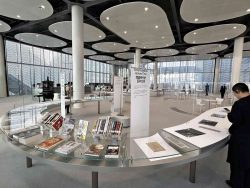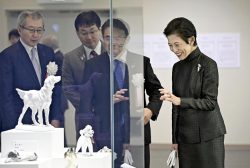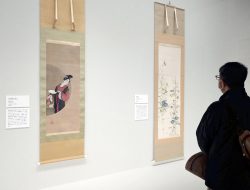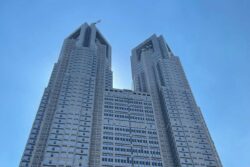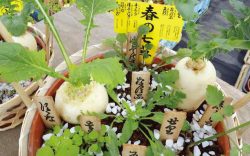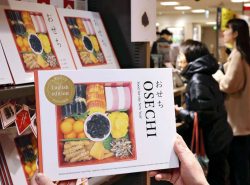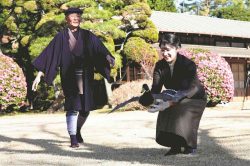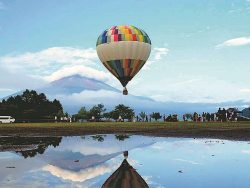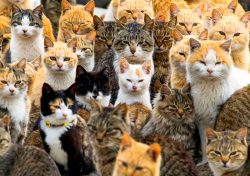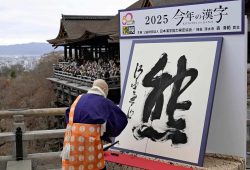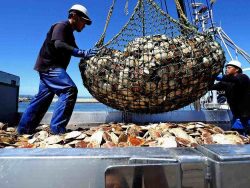Folding Screens by Japan Artists Ito Jakuchu, Maruyama Okyo Found; Discovery Provides 1st Link Between the Edo-Period Artists
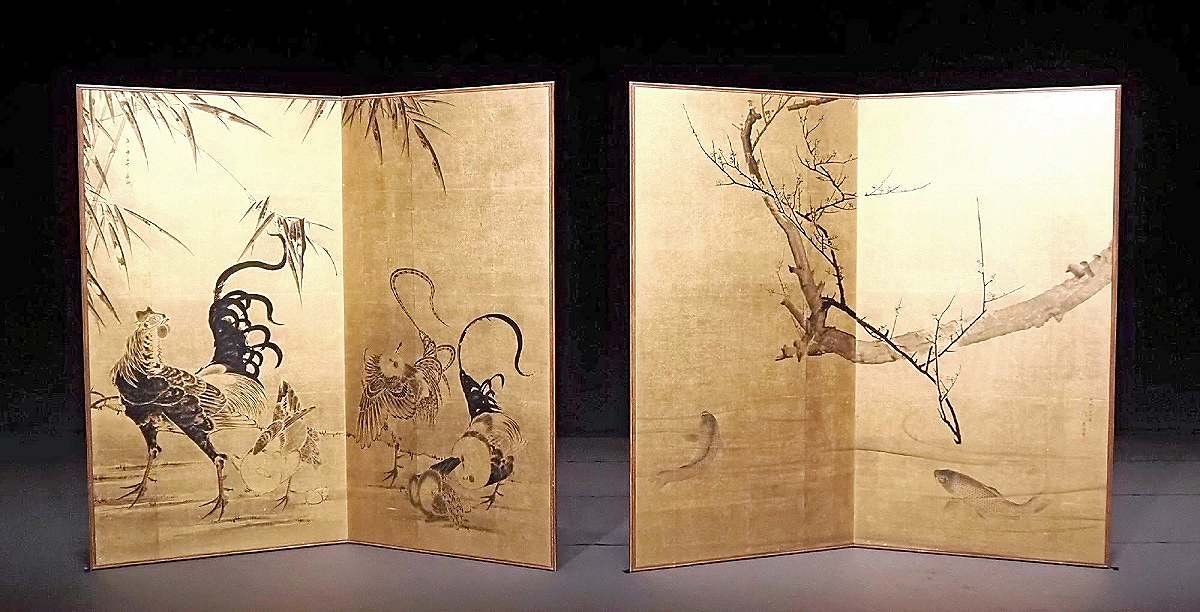
The newly discovered pair of folding screens, a collaborative work by Ito Jakuchu and Maruyama Okyo, is seen in Chiyoda Ward, Tokyo. Left: “Chikkei-zu Byobu” by Jakuchu; Right: “Bairi-zu Byobu” by Okyo
15:30 JST, October 20, 2024
A pair of folding screens created by two Edo-period artists has been discovered and is set to go on display at the Nakanoshima Museum of Art in Osaka.
The museum held a press conference in Tokyo on Oct. 2, where it explained the find. The screens, jointly created by Ito Jakuchu (1716-1800) and Maruyama Okyo (1733-1795), were found after a person contacted Prof. Yuji Yamashita, an art historian at Meiji Gakuin University, who confirmed the find.
Although both artists were active in Kyoto around the same period, there had previously been no direct evidence linking the two.
According to Yamashita, the screens provide the first and only piece that show a connection between Okyo and Jakuchu, making it a highly valuable discovery that demonstrates the distinctive personalities of both artists.
The screens with images drawn in ink on a gold background are in a set made of a left and right side, both of which have a height of 1.66 meters and a width of 1.78 meters. The left side, titled “Chikkei-zu Byobu” (bamboo and rooster screen) was made by Jakuchu and completed before 1790. It depicts bamboo leaves with insect holes and roosters whose tail feathers curve.
The right side, created by Okyo, is titled “Bairi-zu Byobu” (plum and carp screen) and was completed in 1787. It features a bold depiction of plum blossoms, with carps meticulously detailed with scales.
Given the alignment of the paper seams, the work is believed to be a matching pair. After examining the quality of the painting and the seals, Yamashita concluded that it was a joint work by the two artists. As the piece was created late in both artists’ careers, he speculates that a client commissioned the pair of gold folding screens, specifying themes — roosters and carps — that were specialties of Jakuchu and Okyo, respectively.
The folding screens will be on display at an exhibition, which is set to open in June at the museum.
"Culture" POPULAR ARTICLE
-
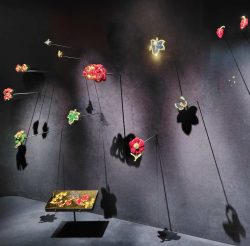
Van Cleef & Arpels Dazzles with Art Deco Artisanry at Tokyo Exhibit
-

Disney’s ‘Twisted-Wonderland’ Animated Series Puts Villains in Spotlight: New Show Features School Inspired by Classic Disney Films
-

Japan Plans to Distribute Manga Overseas Via New Platform
-

Japanese Craftsman Produces Beautiful and Durable Bags Made of Wood
-
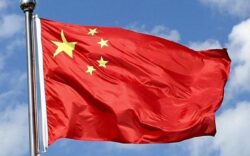
Ayumi Hamasaki’s Shanghai Concert Canceled Day Before Schedule as Part of Beijing Backlash
JN ACCESS RANKING
-

Keidanren Chairman Yoshinobu Tsutsui Visits Kashiwazaki-Kariwa Nuclear Power Plant; Inspects New Emergency Safety System
-

Imports of Rare Earths from China Facing Delays, May Be Caused by Deterioration of Japan-China Relations
-

Japan Pulls out of Vietnam Nuclear Project, Complicating Hanoi’s Power Plans
-

Govt Aims to Expand NISA Program Lineup, Abolish Age Restriction
-

Blanket Eel Trade Restrictions Rejected


